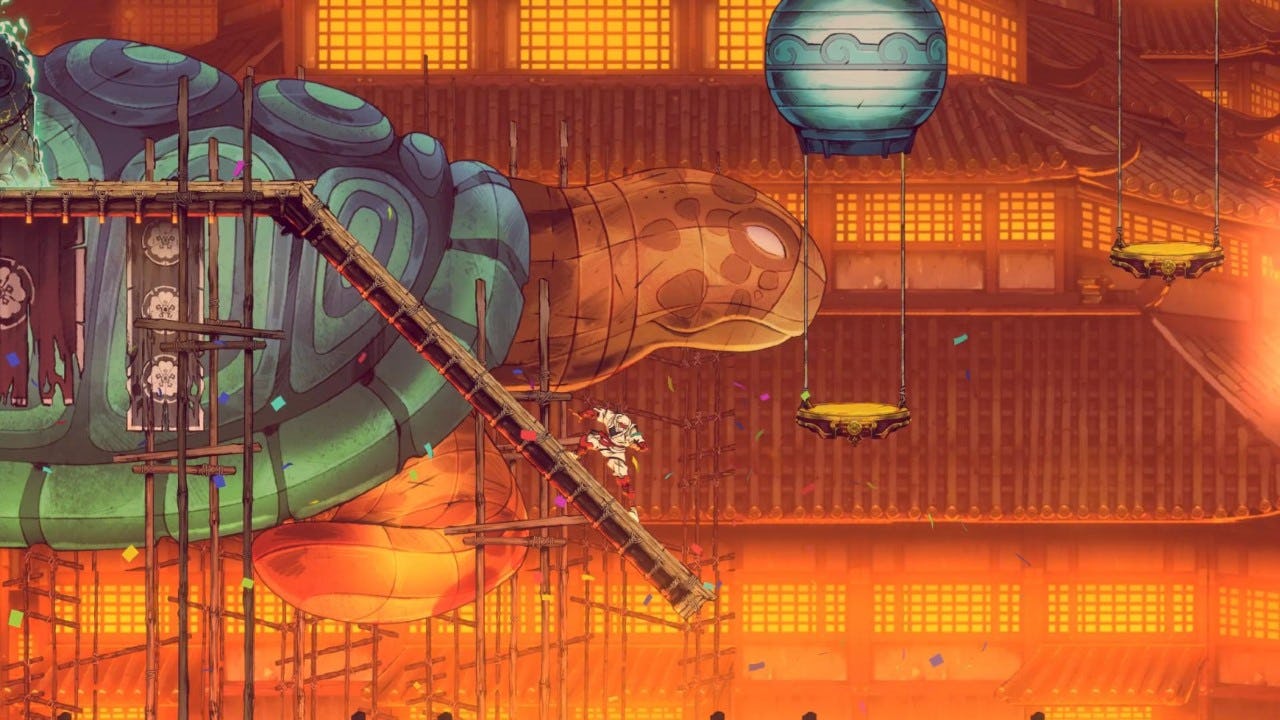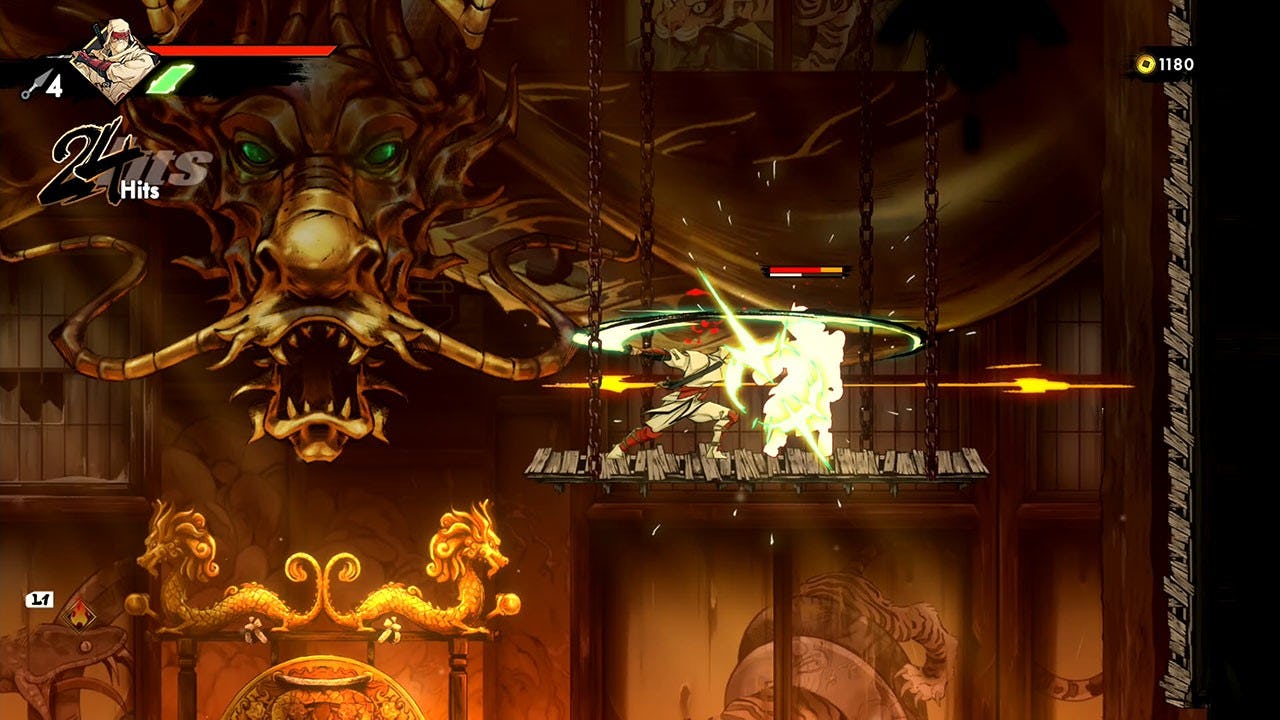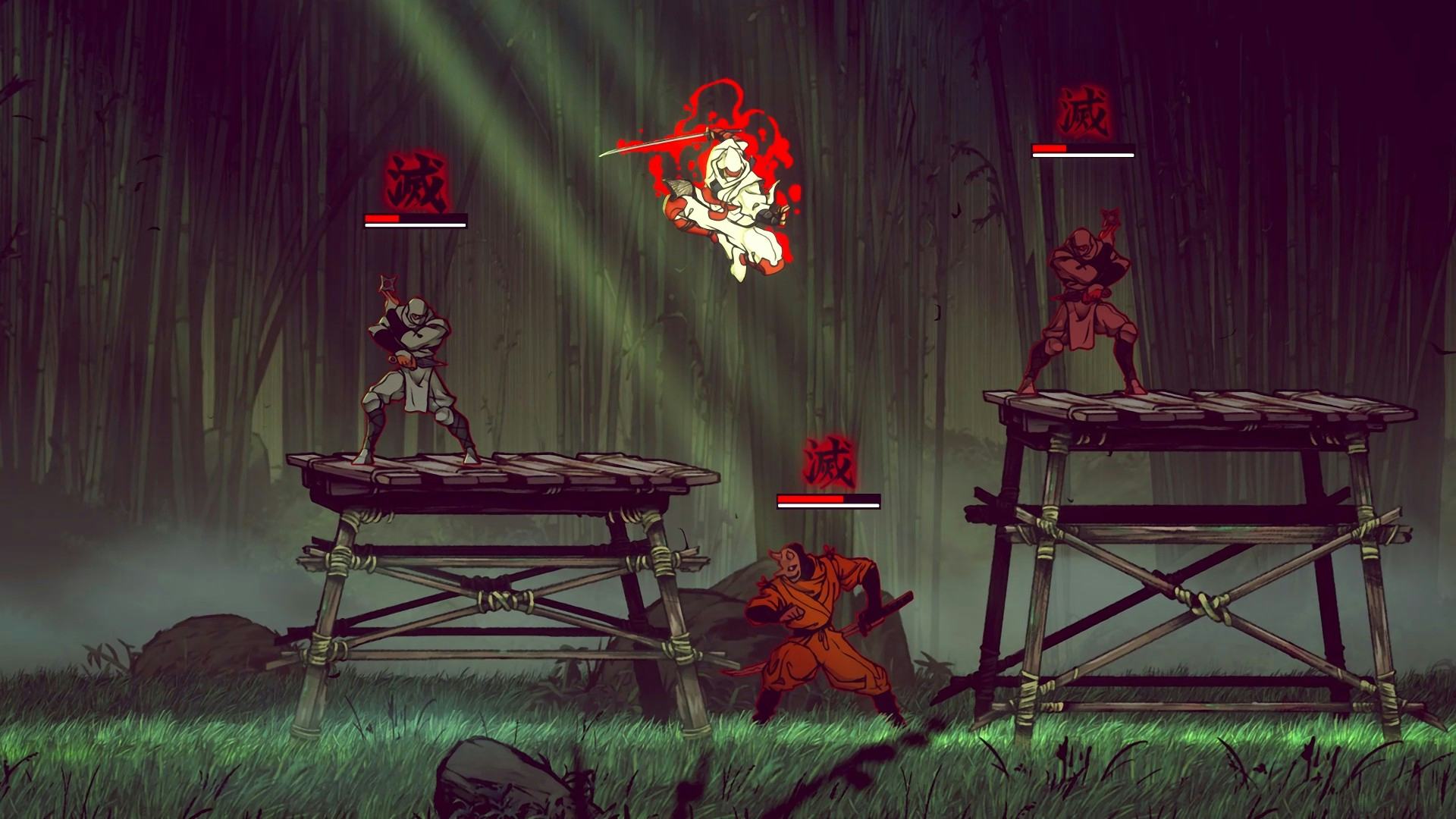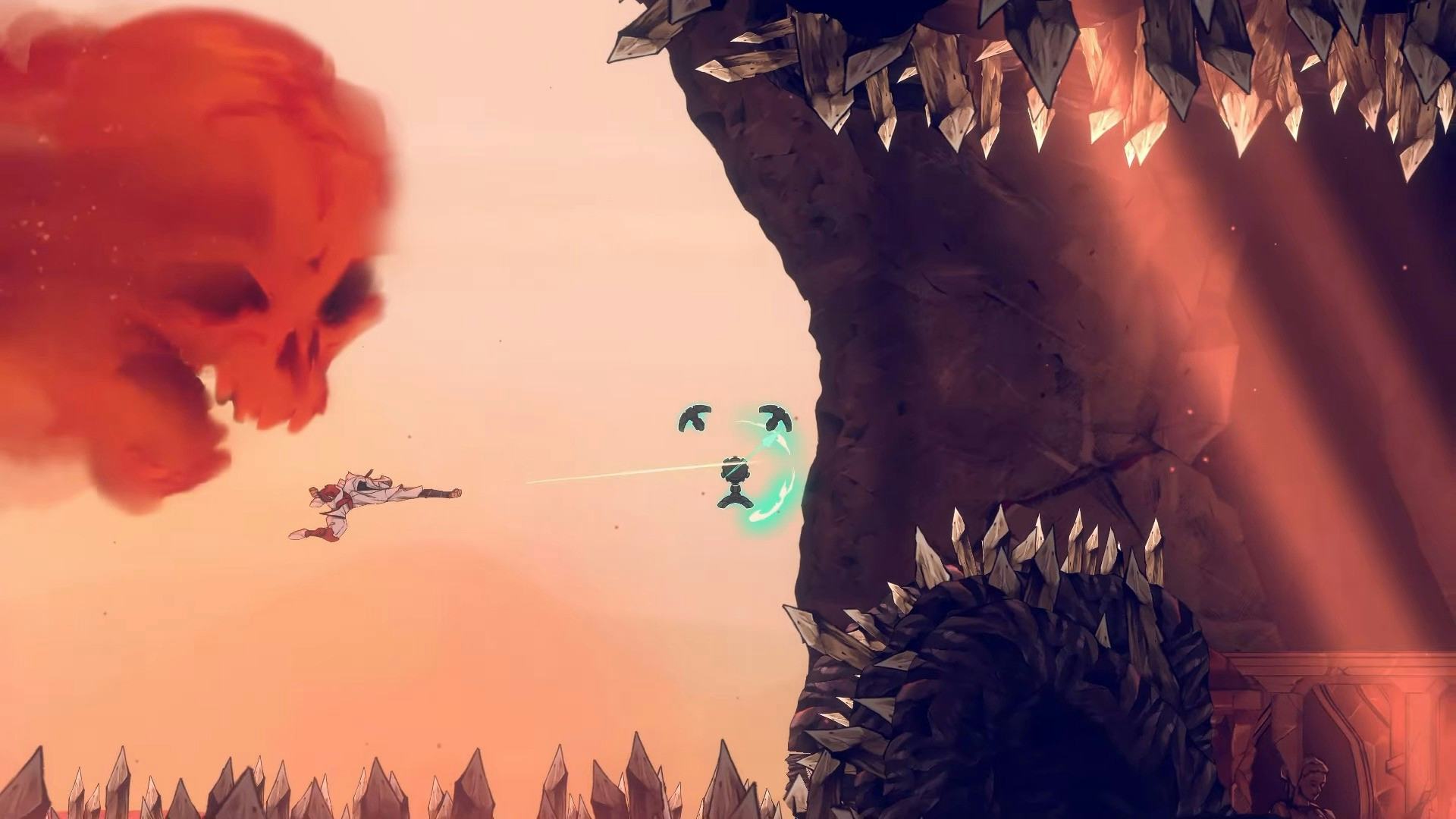
The moment I rode a giant white wolf through a shimmering field of wheat, as a kaiju ran in the distance and shot disgusting, fleshy globs at me, I knew Shinobi was going to be one heck of a game.
Shinobi: Art of Vengeance is one of the most slick and stylish games I’ve ever seen, genuinely on the level of something from Vanillaware (the studio behind 13 Sentinels and Unicorn Overlord). Every single frame and level of this game is gorgeous, but even more unexpected is that Shinobi is one of the most thrilling and complex platformers I’ve played in years, layering on the perfect dose of Metroidvania elements to boot. It’s far and away my biggest surprise of the year, a bold reinvention of a classic franchise that doesn’t just reinvigorate it but brings something wildly refreshingly new to the genre at large.
Way of the Ninja

Art of Vengeance is technically a reboot of the Shinobi franchise. But if you’ve never played a Shinobi game, you’d be forgiven, as the classic Sega series has only had three new games in the last two decades. For all intents, however, this Shinobi is something entirely new with a spirit and style inspired by the classics.
You take on the role of series protagonist and master ninja Joe Musashi, who leads an elite hidden school in the mountains. After his village is decimated by the militaristic ENE Corporation, Musashi sets out on a quest for revenge as the sole person to stop a worldwide takeover.
Shinobi’s story is light and pulpy, mostly there as scaffolding for the game’s structure and visual style — but it works. That’s largely because the core gameplay of Shinobi is compelling enough to keep you invested across its 20 hours, growing and evolving in some fascinatingly dynamic ways.
While this might sound strange, Shinobi is basically a 2D platformer mixed with a fighting game. It has all the platforming and exploration you’d expect, but splices that together with a dynamic combat system focused on combos, split-second evades, juggling enemies, and utilizing skill gauges.
That might initially sound complex, but the system has the simplicity a platformer needs by simply letting you hit a button to pull off cool moves, but it holds an exceptional amount of depth as you learn more moves. As an example, one move gives you a knee kick while dashing that you can link into a sword combo. Another gives you a diving slash that can break through enemy shields. While another lets you extend your combo with a spinning strike if you hit the dash button. In addition to that core combo system, you have a Rage Gauge for extremely powerful super attacks, and a Ki gauge for more instant abilities — like a water barrier that lets you counter attacks, or summoning a giant snake spirit.

The cherry on top of all this, however, is an ultra-satisfying execution mechanic. If you build an enemy’s stagger gauge up, you can eliminate them in a single dazzling execution move, and if multiple enemies are staggered, you can link the executions together. Doing this gives you greater rewards of money, health orbs, etc. — creating a nice risk-reward system.
Again, I know this all sounds complex, but learning the ins and outs of combat is bliss, especially as the game does a fantastic job of throwing a diverse set of enemies at you. Some have armor you need to break, and others are snipers that harass you from a distance. Because of the complexity of the fighting game-esque combat, the enemies match that, creating a challenge that smartly straddles the line between being approachable and devilishly challenging.
Shinobi’s combat is unbelievably satisfying, but your progression for unlocking new moves is supported by the game’s exploration and Metroidvania elements. Emblems you find in each level allow you to unlock purchasable moves at the shop, which you buy using money collected from chests and enemies — where again executing enemies gives you more gold.
Honed to a Fine Sheen

While I hesitate to call Shinobi a full-on Metroidvania, it absolutely has the elements of one. Each of the game’s stages is laden with secrets to find for unlockable skills, optional bosses, talismans to equip, and more. And as you progress, you’ll unlock features like a grappling hook or climbing claws that let you go back and further explore previous levels. And it’s typically a joy to go back because of the game’s silky-smooth platforming controls, letting you control the minutiae of Musashi’s movements. The air dodges and moves you can effortlessly pull off really do have you feeling like a master ninja. The only real issue that crops up is some occasionally frustrating difficulty spikes and bad checkpointing, forcing you to do complex platforming over again.
Playing Shinobi is such a satisfying-feeling experience that I’d likely have a good time no matter what it looked like — but the presentation of the game is what truly makes it ascend to the next level. I mean it wholeheartedly when I say this is one of the most gorgeous games of the year, with richly detailed backgrounds and painterly-like levels that run the gamut from calming to horrific. One level has you trudging through the disgusting insides of a massive kaiju to destroy it from the inside, while another is a stunning lantern-lit city that feels almost dreamlike.

There’s a dazzling amount of variety to the environment, with levels often permeated by huge set pieces that fit their theme — from jumping on falling rocks as you plummet down the pit of a mine, to surfing on a shield while you dodge enemy jet skis and mines. All of this is backed by one of the hardest soundtracks of the year, an electric symphony made by Tee Lopes, the composer behind Sonic Mania.
Every element of Shinobi works in concert to make for a relentlessly gripping experience, and I think it’s legitimately fascinating how the game takes elements from so many different places to make something new. It’s like if you took Metroid, Ninja Gaiden, Hollowknight, and Street Fighter and threw them all into a blender, but the mixture actually turns out delicious.
It’s been a long time since we’ve seen a Shinobi game, but by all accounts, this feels like it could be the start of a new franchise for Sega. That mix of platforming and fighting elements is intoxicating, and it feels like it’d be an actual crime to not see more of it.
9/10.
Shinobi: Art of Vengeance launches on Aug. 29 for PS4, PS5, Xbox One, Xbox Series X|S, Nintendo Switch, and PC. Inverse reviewed the PC version.
INVERSE VIDEO GAME REVIEW ETHOS: Every Inverse video game review answers two questions: Is this game worth your time? Are you getting what you pay for? We have no tolerance for endless fetch quests, clunky mechanics, or bugs that dilute the experience. We care deeply about a game’s design, world-building, character arcs, and storytelling come together. Inverse will never punch down, but we aren’t afraid to punch up. We love magic and science-fiction in equal measure, and as much as we love experiencing rich stories and worlds through games, we won’t ignore the real-world context in which those games are made.







